Related Research Articles

Charles Blount, 1st Earl of Devonshire, KG was an English nobleman and soldier who served as Lord Deputy of Ireland under Queen Elizabeth I, and later as Lord Lieutenant of Ireland under King James I.
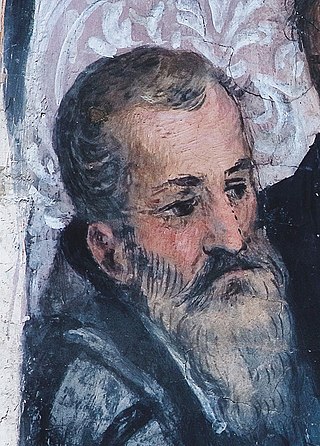
Hugh O'Neill, was an Irish Gaelic lord, Earl of Tyrone and was later created The Ó Néill Mór, Chief of the Name. O'Neill's career was played out against the background of the Tudor conquest of Ireland, and he is best known for leading a coalition of Irish clans during the Nine Years' War, the strongest threat to the House of Tudor in Ireland since the uprising of Silken Thomas against King Henry VIII.

Sir Turlough Lynagh O'Neill was an Irish Gaelic lord of Tír Eoghain in early modern Ireland. He was inaugurated upon Shane O’Neill’s death, becoming The O'Neill. From 1567 to 1595, Sir Turlough Luineach O'Neill was leader of the O'Neill clan, the most powerful family in Ulster, the northern province in Ireland. He was knighted in 1578.

Shane O'Neill was an Irish chieftain of the O'Neill dynasty of Ulster in the mid-16th century. Shane O'Neill's career was marked by his ambition to be the O'Neill—sovereign of the dominant O'Neill family of Tír Eoghain. This brought him into conflict with competing branches of the O'Neill family and with the English government in Ireland, who recognised a rival claim. Shane's support was considered worth gaining by the English even during the lifetime of his father Conn O'Neill, 1st Earl of Tyrone. But rejecting overtures from Thomas Radclyffe, 3rd Earl of Sussex, the lord deputy from 1556, Shane refused to help the English against the Scottish settlers on the coast of Antrim, allying himself for a short time instead with the MacDonnells, the most powerful of these settlers. Shane viewed the Scottish settlers as invaders, but decided to stay his hand against them with hopes of using them to strengthen his position with the English. However, tensions quickly boiled over and he declared war on the Scottish MacDonnell's defeating them at the Battle of Glentaisie despite the MacDonnells calling for reinforcements from Scotland. The Scottish MacDonnells would later assassinate Shane O'Neill and collect the bounty on his head.
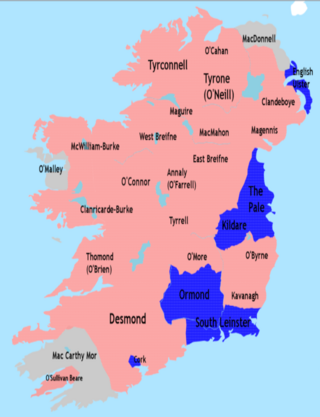
The Nine Years' War, sometimes called Tyrone's Rebellion, took place in Ireland from 1593 to 1603. It was fought between an Irish alliance—led mainly by Hugh O'Neill of Tyrone and Hugh Roe O'Donnell of Tyrconnell—against English rule in Ireland, and was a response to the ongoing Tudor conquest of Ireland. The war was fought in all parts of the country, but mainly in the northern province of Ulster. The Irish alliance won some important early victories, such as the Battle of Clontibret (1595) and the Battle of the Yellow Ford (1598), but the English won a victory against the alliance and their Spanish allies in the siege of Kinsale (1601–02). The war ended with the Treaty of Mellifont (1603). Many of the defeated northern lords left Ireland to seek support for a new uprising in the Flight of the Earls (1607), never to return. This marked the end of Gaelic Ireland and led to the Plantation of Ulster.
Hugh McShane O'Neill was an early modern Irish nobleman and rebel associated with the McShanes of Glenconkeyne and Killetra. This group was also called the "Wild Clan Shanes of Killetragh" or the "McShane-O'Neills". His parentage is disputed however he is claimed by some as being either a grandson or great-grandson of Conn O'Neill, 1st Earl of Tyrone, and Gearoid Mór Fitzgerald, 8th Earl of Kildare, and of the primary line of the O'Neill of Tyrone clan.
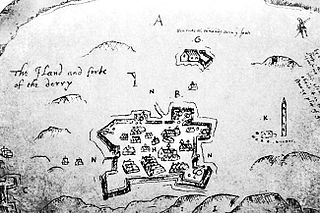
Sir Cahir O'Doherty was the last Gaelic Chief of the Name of Clan O'Doherty and Lord of Inishowen, in what is now County Donegal. O'Doherty was a noted loyalist during Tyrone's Rebellion and became known as the Queen's O'Doherty for his service on the Crown's side during the fighting.

Tír Eoghain, also known as Tyrone, was a kingdom and later earldom of Gaelic Ireland, comprising parts of present-day County Tyrone, County Armagh, County Londonderry and County Donegal (Raphoe). The kingdom represented the core homeland of the Cenél nEógain people of the Northern Uí Néill and although they ruled, there were smaller groups of other Gaels in the area. One part of the realm to the north-east broke away and expanded, becoming Clandeboye, ruled by a scion branch of the O'Neill dynasty. In one form or another, Tyrone existed for over a millennium. Its main capital was Dungannon, though kings were inaugurated at Tullyhogue Fort.
Sir George Paulet (1553–1608), also known as Pawlett, Pawlet, or Powlet, was an English soldier and administrator. He served as governor of Derry in Ireland. His arrogant and insolent behaviour caused O'Doherty's Rebellion in 1608. Paulet was killed by the rebels during the Burning of Derry.
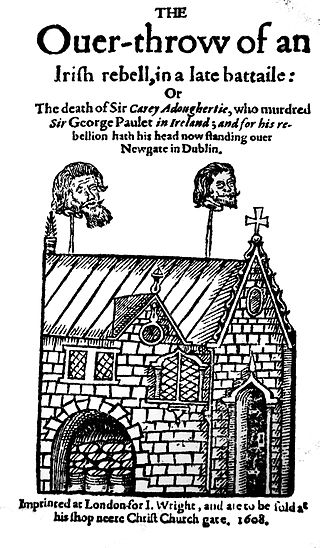
O'Doherty's Rebellion, also called O'Dogherty's Revolt, was an uprising against the Crown authorities in western Ulster, Ireland. Sir Cahir O'Doherty, lord of Inishowen, a Gaelic chieftain, had been a supporter of the Crown during the Nine Years' War (1593–1603), but angered at his treatment by Sir George Paulet, governor of Derry, he attacked and burned Derry in April 1608. O'Doherty was defeated and killed in the Battle of Kilmacrennan in July. The rebellion ended with the surrender of the last die-hards at the Siege of Tory Island later in the same year.
Henry MacShane O'Neill or Anraí mac Seáin Ó Néill was an Irish flaith, a son of Shane O'Neill. He was the leader of the MacShane in the late 16th century and early 17th century, and sought control of the O'Neill Clan, fighting with his brother against Hugh O'Neill.
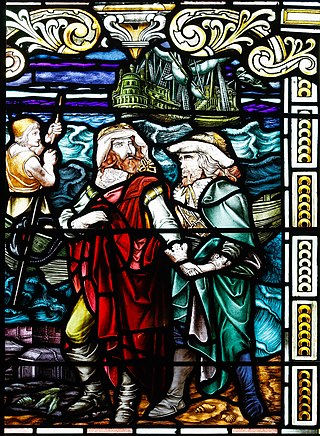
Henry Docwra, 1st Baron Docwra of Culmore was a leading English-born soldier and statesman in early seventeenth-century Ireland. He is often called "the founder of Derry", due to his role in establishing the city.
Sir Josias Bodley (1550-1618) was an English military engineer noted for his service in Ireland during the Nine Years' War. Following the end of the war he remained in Ireland where he oversaw the rebuilding of several major forts. In 1609 he was entrusted with the Bodley Survey which mapped out terrain for the Ulster Plantation.

Burt Castle is a ruined castle located close to Newtowncunningham and Burt, two villages in the east of County Donegal in Ulster, Ireland. Historically it was sometimes spelt as Birt Castle. It is also known by the name O'Doherty's Castle, and should not be mistaken for O'Doherty's Keep near Buncrana.
Sir Cormac MacBaron O'Neill (d.1613) was an Irish soldier and landowner of the Elizabethan and early Stuart eras. He was part of the O'Neill dynasty, one of the most prominent Gaelic family in Ireland.
Sir Turlough McHenry O'Neill is known for having been killed together with his father, Henry, fighting for the crown in O'Doherty's Rebellion and for being the father of Sir Phelim O'Neill, who started the Irish Rebellion of 1641.
Captain Humphrey Willis was an English soldier in Ireland in the sixteenth century, his parents are unknown. Captain Willis was appointed Sheriff of County Donegal and County Fermanagh by the Lord Deputy of Ireland William FitzWilliam. Captain Willis was a fluent speaker of Irish, and enforced his authority with a detachment of the Irish Army.
Conn Oge O'Donnell was a member of the O'Donnell dynasty of Donegal.
Nuala O'Donnell was a member of the O'Donnell dynasty in sixteenth century Ireland who took part in the 1607 Flight of the Earls.
The Battle of Lifford was fought in County Donegal in October 1600, during the Nine Years' War in Ireland. A mixed Anglo-Irish force under Sir John Bolle and the Gaelic leaders Niall Garve O'Donnell and Sir Arthur O'Neill captured the strategic town of Lifford. A subsequent attempt to recapture it by forces led by Red Hugh O'Donnell failed.